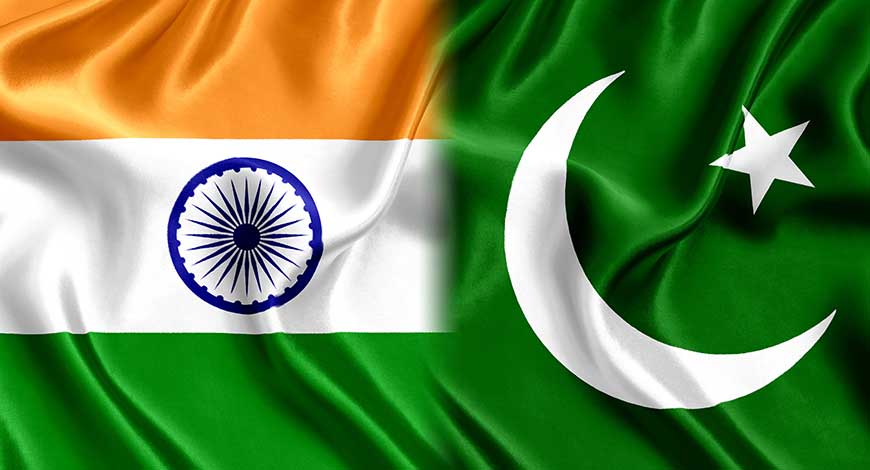BY: Durdana Najam

PEJOURNAL – India and Pakistan have resolved to honour the 2003 Line of Control (LoC) ceasefire agreement. It has brought to an end almost six years of uninterrupted skirmishes along the border.
In between was a major strike. Both the countries entered into each other’s airspace to avenge attacks on their respective soils. India was the first to take the leap. It targeted “terrorists” hiding in Balakot. Pakistan could not take this lying down and threw payloads on Indian territory as well.
In the meantime, the captured Indian pilot was released to endorse Pakistan’s intention to have peace. Any tension between India and Pakistan has been bound to translate into a heated LoC, resulting in the destruction of villages and killing innocent people who might even not know the significance of the line. In a pattern, each country had always accused the other of resorting to unprovoked firing.
The timings of reviving peace on the LoC were also interesting. It marked exactly two years since India’s incursion into Balakot.
According to the media vibes, both countries’ military personnel struck a deal through a hotline contact. The statement issued following the truce said: “In the interest of achieving mutually beneficial and sustainable peace along the borders, the two DGMO agreed to address each other’s core issues and concerns which have [the] propensity to disturb the peace and lead to violence.”
Experts are reluctant to accept it to be a straightforward affair. The Special Assistant to the Prime Minister on National Security, Moeed Yousuf, had, however, struck down rumours about the possibility of any backdoor discussions with Indian National Security Adviser Ajay Doval.
Considering the level of animosity, both countries had been harbouring against the other, a hotline was not enough to clear the air, though. The move has since clinched appreciation from all quarters, especially the White House that has instructed India and Pakistan to build constructive talks on Kashmir.
The 2003 ceasefire offer was made by the then prime minister of Pakistan, Zafarullah Jamali, on November 23, 2003, on the eve of Eidul Fitr. India accepted the offer a few days later in a statement from its foreign ministry.
Unlike a defined international border separating the territories of sovereign states, the LoC is the mutually accepted line between India and Pakistan. The line shall maintain the ground status quo until the final settlement of the Kashmir issue.
Since the LoC’s delineation in 1972, the border saw sparse and negligible violations for over a decade. It was towards the end of the 1980s when the Kashmir insurgency flared up, violations intensified along the line.
According to Dr Happymon Jacob, who had written a detailed account of ceasefire violation in his book on the Indo-Pak border, three reasons trigger unrest on the LoC. The first concerns the localised operational factor, such as someone crossing the line inadvertently, constructing or fencing activities without a mutual understanding, or lack of an institutional mechanism to manage the border.
The second factor relates to the autonomous military actions, such as testing new troops or grabbing land. The third factor bears on domestic politics, such as local elections or high-profile visits to J&K. This also challenges the usual excuses of violation wherein India attributes it to cover for “infiltration by Pakistan”, and Pakistan calls it India’s provocation.
Another critical factor that determines whether the LoC will become aggressive or peaceful is the quality of both countries’ bilateral relations. For instance, violations had reduced when Composite Dialogue was held from 2004 to 2007. Similarly, of the 3,289 violations reported by India in 2019, approximately 1,586 took place after India’s unilateral decision to abrogate Article 370 related to Kashmir’s constitutional right to hold an autonomous status.
Respect of the ceasefire agreement should become a constant feature rather than an exception when both the countries find it in their self-interest. One element that may have pushed India to extend the hand of truce could be its international image turning pale owing to its stern posturing towards its neighbouring countries and the minorities or marginalised communities domestically.
Pakistan may have also accepted the truce offer for its imperative to reduce tension amid the Afghan civil war getting intense. Already in the mire, the peaceful eastern border will leave Pakistan enough time and energy to see the US-Afghan peace agreement conclude successfully. A war-free Afghanistan is in the interest of both India and Pakistan.
For a peaceful coexistence, India would have to stop making Pakistan a scapegoat for domestic political fervour, and Pakistan would have to stop seeing India’s relations through a military perspective. We cannot have our pudding and eat it too — peace will not follow without diplomatic relationships taking precedence over any other relations and concern.